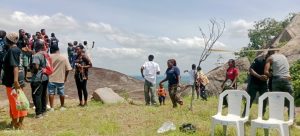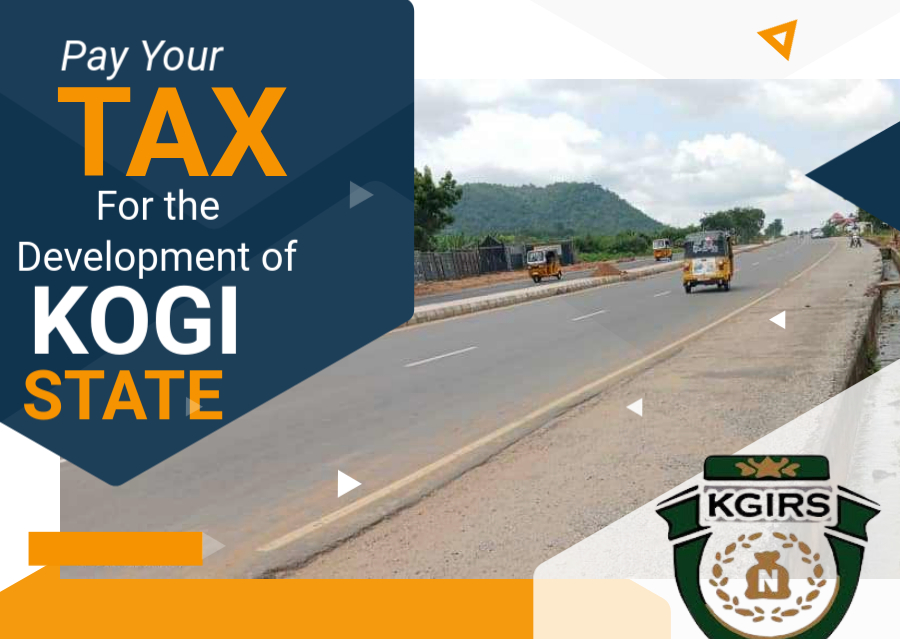

By Dada Ahmed.

The Ogonogose mountain in Magongo community, about 1,500 feet above the sea level, providing serene environment for picnic and other creative activities.
From the rhythmic beats of Igala drums to the colorful threads of Ebira weaving, and other creative expressions in the Western Senatorial district of Kogi, the state’s culture can aptly described as a geopolitical entity alive with huge creative potential waiting to be harnessed.
Yet, according to cultural enthusiasts,much of this potential remains hidden, waiting to be transformed into economic value that can drive growth and empower its people.
Therefore,as the global economy shifts towards knowledge, talent, and innovation, Kogi cannot afford to ignore the immense possibilities of a creative economy.
The concept of a creative economy has gained global recognition as a transformative force for growth, job creation, and social inclusion. At its core, the creative economy refers to economic activities that rely on human creativity, innovation, and cultural assets. It encompasses industries such as music, film, arts, fashion, design, media, tourism, and technology. For a state like Kogi,endowed with a rich cultural heritage, abundant talents, and a youthful population,the creative economy represents a golden opportunity to unlock prosperity and sustainable development.
Kogi State is strategically located at Nigeria’s geographical centre, bordering 10 states and the FCT, it serves as a bridge between the North and South. Its cultural diversity, natural resources, and youthful demographic provide fertile ground for nurturing a thriving creative sector. From Igala masquerade performances and Ebira cloth weaving to the natural beauty of Mount Patti and the confluence River Niger/Benue, the state possesses untapped assets that can be transformed into economic Regrettably,these opportunities have remained largely underutilized.
Globally, the creative economy is one of the fastest-growing sectors, contributing trillions of dollars annually. In Nigeria, Nollywood, music, fashion, and digital content have placed the country on the global map.
Some citizens of the state; Mohammed Tijani, Ochuche Haruna and Adamu Aliyu believe that if states like Lagos can leverage this potential to boost their GDP, there is no reason Kogi cannot follow suit, particularly given its unique geographical advantage and wealth of cultural resources.
The question on the lips of many Kogites is how can Kogi harness the creative economy to drive sustainable growth?
One starting point they urged should be through education and skill development. Kogi has numerous and result-orientex tertiary institutions, including Prince Abubakar Audu University, Kogi State Polytechnic, and Federal University Lokoja. These institutions can serve as incubators for creative talents by introducing specialized programmes in film, music, fashion design, animation, and digital media. By nurturing young people with creative skills, the state will not only empower them with employment opportunities but also stimulate industries that can generate revenue locally and globally.
Tourism is another vital aspect of the creative economy. Kogi’s historical sites,such as Lord Lugard’s House, the Confluence of Rivers Niger and Benue, and ancient relics of the Nupe and Igala kingdoms as well as man
numerous amazing historical sites in Egbiraland and Kabba areas hold significant potential for cultural tourism. Proper investment in infrastructure, branding, and promotion can transform these sites into attractive destinations, creating jobs for local communities and boosting hospitality businesses.
In terms of creative industries, the film and music sectors present enormous promise. Kogi has produced a number of Nollywood actors, filmmakers, and musicians who could inspire a new generation of creative entrepreneurs. With government support in the form of grants, production hubs, and policies that ease access to equipment and financing, the state can position itself as a regional hub for film and music production.
Fashion and craftsmanship are equally promising. Ebira handwoven fabrics, Igala traditional attire, and Nupe beadwork are unique cultural expressions that can be modernized for broader markets. By connecting local artisans with designers, digital platforms, and export opportunities, Kogi can create a sustainable fashion industry that preserves heritage while boosting incomes.
The digital economy is another critical dimension. Young people in Lokoja, Okene, Idah, and Kabba are increasingly active in graphic design, animation, app development, and online content creation. However, the hindrance for them in realizing this dream lies in limited infrastructure and poor internet access.
The state government, in collaboration with private telecom and tech firms, can establish innovation hubs, provide affordable internet, and offer training to position Kogi as a digital creativity hub.
The role of government cannot be overemphasized. Beyond policy statements, the state needs a clear creative economy roadmap. This should include setting up a Creative Economy Development Council, tax incentives for startups, funding schemes for young entrepreneurs, and partnerships with international agencies. Governments in other parts of the world, such as South Korea and Rwanda, have demonstrated how deliberate policies can turn creativity into global brands and Kogi can follow suit.
The private sector also has a crucial role to play. Banks, telecommunication companies, and private investors in Kogi can support creative startups through venture capital, sponsorships, and mentorship. Corporate organizations can also sponsor music festivals, art exhibitions, and fashion shows, creating platforms for young talents to showcase their work. By recognizing the creative economy as a viable business frontier, the private sector can accelerate innovation and expand the state’s revenue base.
Partnerships have to be essential element for social and economic growth of any organized society.Kogi can collaborate with cultural institutions, international organizations, and creative hubs in Lagos, Abuja, Portharcourt and beyond. Exchanges, residencies, and cross-border collaborations can expose local talents to global best practices, while also positioning Kogi as a player in the regional creative economy.
Of course, challenges abound, especially on issues such as inadequate infrastructure, erratic power supply, poor internet penetration, and lack of access to finance remain stumbling blocks. However, cultural believe that with strong political will, deliberate investment, and stakeholder collaboration, these challenges can be gradually overcome. After all, every thriving creative hub today,from Hollywood to Bollywood,started with a vision, commitment, and consistent investment.
The potential benefits are immense. A thriving creative economy in Kogi would not only diversify the state’s economy beyond agriculture and civil service but also reduce unemployment, empower youths, and promote social cohesion. Moreover, by exporting Kogi’s culture, stories, and innovations to the world, the state can improve its global visibility and attract foreign investment.
For the people of Kogi, the creative economy represents more than just a business opportunity, it is about telling their stories, preserving their heritage, and shaping their identity in the modern world in such away that by investing in creativity, the state is investing in its future.
Ultimately, building a creative economy for Kogi’s development will require vision, leadership, and collective effort and the current administration led by Alhaji Ahmed Usman Ododo has effectively demonstrated in piloting the affairs of the state.
The government must provide the enabling environment, the private sector must seize opportunities for investment, and the people must embrace their creative potential. With the right mix of policy, passion, and persistence,the belief in many quarters is that Kogi can transform itself into a beacon of creativity and innovation in Nigeria.
Ahmed publishes The Reporters.
ahmeddada008@gmail.com

